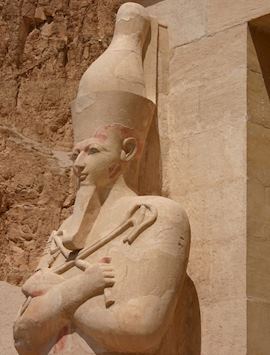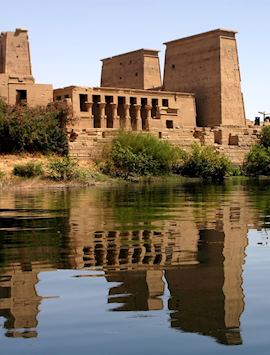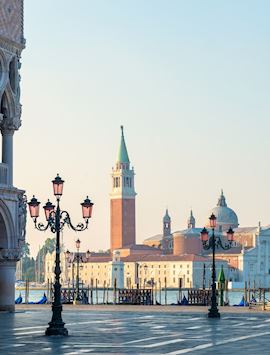Egyptian pharaohs, Greek kings and Byzantine emperors may seem like distant figures, but their decisions still shape our world. The cities and roads of long-gone empires — Rome in particular — created the scaffolding of modern Europe and the Middle East. Thousands of years later, many ancient metropolises still hum with commerce and culture.
If you know where to look, you can explore remnants of these cities’ ancient origins. Our Europe and Middle East specialists will show you how to delve deeply into any of these cities, or you could take a grand tour of Europe to see several in one trip.
Cairo, Egypt: pyramids and the Great Sphinx

By Egypt specialist Amira
Gritty, sprawling and loud, with a buzzing downtown, Cairo is a city on the go. As you arrive by air, you can still see the pyramids rising from the busy modern city, a remnant of a culture that started more than 5,000 years ago.
I, for one, find it hard to wrap my head around such an enormous span of time, so I strongly suggest a private tour of the pyramids. A good guide will help you put the whole thing in perspective — for example, my guide explained that we live closer in time to Cleopatra than she did to the pharaohs who built the first pyramid.
Standing at the bottom of the vast, soaring Great Pyramid of Cheops was humbling — each block is more than twice as tall as me.
You can go into the Great Pyramid, but I also suggest taking time to visit the Bent or Red Pyramids, located in the countryside along the palm-fringed Nile. They draw much smaller crowds, giving you more space and quiet to appreciate their importance.
Athens, Greece: the Parthenon and Cycladic art
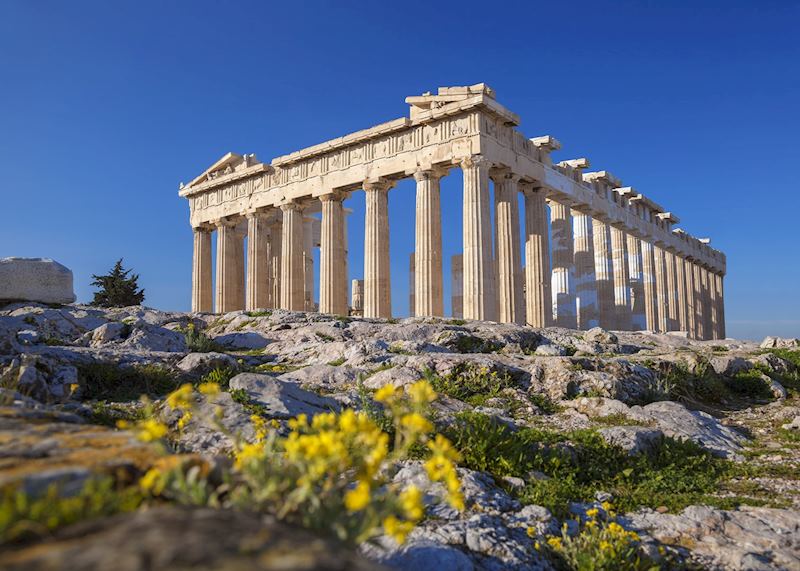
By Greece specialist Laura
The pyramids’ wild popularity means it can be hard to remember that the Egyptians weren’t the only complex culture that was thriving 5,000 years ago. But ancient Greece traces its roots back to about 3,000 BC, when a probably matriarchal culture made thousands of abstract sculptures of women. You can visit the world’s largest collection of these figurines at the Museum of Cycladic Art in Athens.
Of course, Cycladic art isn’t the ancient history that most people imagine when they think of ancient Athens. The enormous Parthenon, perched high on the rocky Acropolis overlooking the modern city, boasts the elegant proportions and graceful columns that define ancient Greek architecture.
It’s wise to visit the Parthenon as early in the morning as you can to beat the heat of the day. Also, a private guide will help weave together the mythology and the history that makes up the tapestry of Greek culture.
From there, head to the Parthenon Museum. Purpose-built to house the temple’s remaining treasures, it’s arguably the most dazzling museum in a city that’s full of them.
Rome, Italy: gladiators and mystery cults

By Italy specialist Caroline
In many ways, Rome’s imperial past remains a vital part of its modern life. Visitors still leave flowers at Caesar’s tomb and you can eat in restaurants with wine cellars that date back to the Republic. But arguably the biggest mark that the empire left on the city is the Colosseum. Almost 2,000 years old, it’s still an imposing testament to the might and power of the long-lost empire.
That’s why some people are startled the first time they visit and see a busy, multi-lane road running right around the ancient building.
A tour of the Colosseum and Forum is imperative to understanding the city’s ancient roots — a private guide can add context and help you steer around the inevitable crowds. But to really come to grips with the city’s past, consider a class in gladiatorial fighting styles.
At Gladiator School, children (and their adults) can don a rough linen tunic and take up a wooden sword to run through basic drills and learn a few simple moves. Rolling on the soft, sun-warmed sand floor and dodging the (slow) swings of the instructor, I got a glimpse into the difficult lives these gladiators lived. The school is located on the Appian Way, a road that itself dates back to 312 BC.
For a less sweaty way to examine Rome’s ancient roots, you can visit the Basilica di San Clemente. This 12th-century church is built on top of a 4th-century early Christian church, which is, in turn, built on top of a temple that was home to a mystery cult dedicated to the god Mithras.
Split, Croatia: Diocletian’s palace
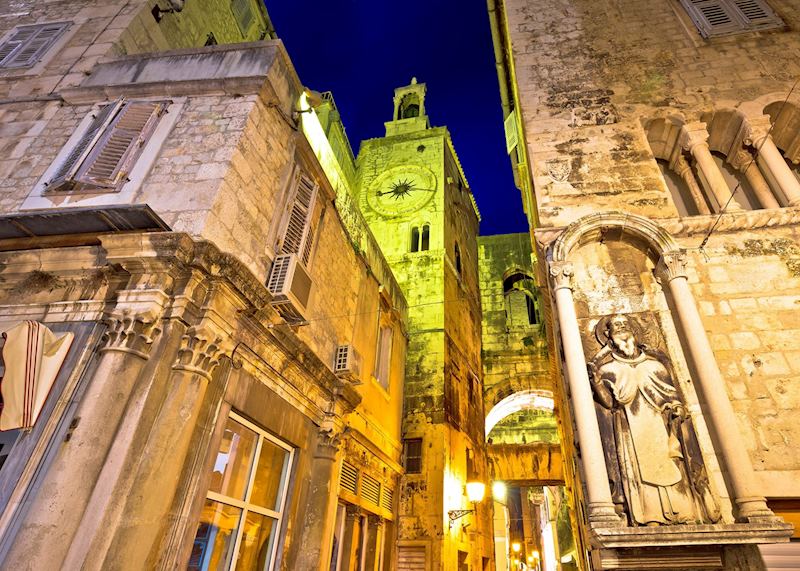
By Croatia specialist Casey
Standing on Split’s seafront promenade, it’s easy to see why Roman Emperor Diocletian decided to retire here in the 4th century. Settled on the shores of the jewel-bright Adriatic, against a backdrop of green mountains, Croatia’s second-largest city was founded when the emperor opted to spend his twilight years enjoying the sea views.
Built over the course of a decade out of gleaming white stone quarried in nearby Brač, the so-called palace was, in fact, a fortified compound that combined town, palace, temples and fortress. Today, that compound makes up the bones of the old city. When you stroll through narrow, stone-paved streets, you’re walking through the same hallways where the great emperor once strode.
The complex has been inhabited for most of the past 1,700 years and today shops, cafés and apartments fill the rooms where soldiers and servants or the emperor himself once lived. Despite this — or perhaps because of it — many parts of the palace remain remarkably well preserved. In the one-time temple to Jupiter, you can still see individual faces carved into the ceiling panels.
It’s unsurprising that film crews are attracted to the city as a location. Game of Thrones, for example, shot several scenes here amid the streets and cellars of the palace.
To explore, I suggest a walking tour. If you’re an avid fan of the show, we can arrange for a Game of Thrones-inspired exploration, or you can take a more general walking tour of the palace that includes rooftop views from the Ethnographic Museum.
Jerusalem: a complicated present and contentious past

By Israel specialist Olivia
More than any other city on this list — possibly any other city in the world — the ancient past is still very present in modern-day Jerusalem. Three different religions have important holy sites here and the competing claims have resulted in a complex mosaic of conflicting symbology, clashing world views and different narratives.
The heavy weight of those beliefs and living history is part of what makes Jerusalem such a vital destination, particularly the Old City. You’ll find Jewish people celebrating at the Western Wall, Christian pilgrims walking along the Via Dolorosa and Muslims answering the evening call to prayer at the Al-Aqsa Mosque.
A guide is a good idea in almost any city, but it’s absolutely vital in Jerusalem, with its snarled thicket of history, spirituality and politics. We’ll be sure to match you with someone who understands your interests, whether that’s modern politics, Jewish tradition, Muslim history or Biblical sites.
It’s easy to get lost in the great sweep of millennia, so I also suggest you take the time to make some personal connections. If you’re visiting on a Friday evening, you can enjoy a Shabbat dinner with a Jewish family, or we can arrange for you to meet with an Israeli Arab to share tea and hear about her life.
Amman, Jordan: Philadelphia and Jerash

By Jordan specialist Kerry-Ann
Most people who come to see ancient Jordan only see Amman as a brief stop on their way to Petra. That’s too bad — Amman’s ancient ruins offer a glimpse into the country’s storied past amid the bustling modern city.
In the city itself, you can find a large Roman amphitheater in the district known as Philadelphia. Though it’s restored rather than preserved, the structure still gives me a strong sense of Amman’s long history, especially when I climb up into the seats in the morning light.
I like to visit the hill overlooking the arena to see the three massive stone fingers that stand amid the rubble of a citadel that once sat there. The fingers are the only remains of what’s thought to have been a statue of Hercules, who was once worshiped at a temple here. The spot also offers one of the best views of Amman.
You can also drive just an hour outside the city to see Jerash, one of the best-preserved Greco-Roman cities in the region. Jerash was inhabited as far back as the Neolithic era, but reached its heyday as a member of the Decapolis, a loose network of ten Byzantine city-states. Today, you can still wander the grid of its streets and stroll amid the columns at the Temple of Artemis.
Read more about trips to Europe and the Middle East
Start thinking about your experience. These itineraries are simply suggestions for how you could enjoy some of the same experiences as our specialists. They're just for inspiration, because your trip will be created around your particular tastes.
View All Tours in Europe

